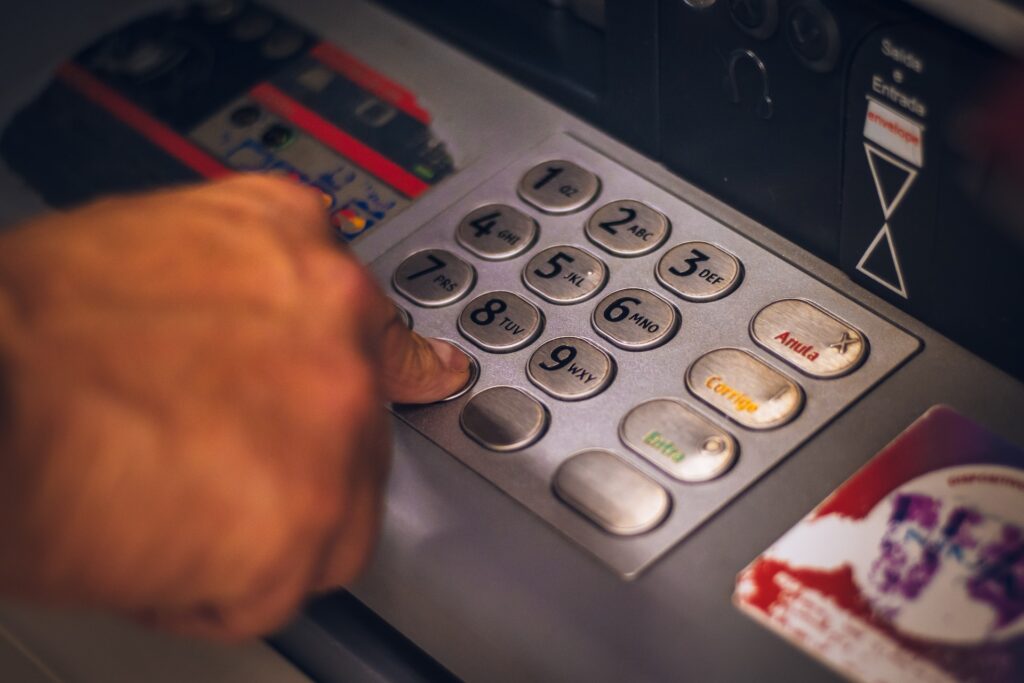Student checking accounts are designed with a range of features that are tailored to meet the unique needs of students enrolled in colleges and universities. The aim of checking accounts for college students is to simplify money management for first-time account holders. Opening a student checking account is a great way to lay a solid financial foundation while you’re in college.
What Is A Student Checking Account?
A student checking works like any other bank checking account in that it acts as a place where you can store your money and withdraw from it when you need it. However, there are a few significant differences that distinguish student checking accounts from regular checking accounts.
For one, generally, only students enrolled in high school, vocational programs, college, and other eligible educational institutions can hold a student checking account. Another major difference lies in the perks that are offered. Checking accounts for college students typically have lower or zero fees and lower minimum balance requirements. They also offer useful resources that boost account holders’ financial education.
If you meet the age and education requirements, you can open a student checking account on your own without an adult co-holder. This is unlike child or teen accounts that require an adult co-owner.
8 Benefits Of Student Checking Accounts
Checking accounts for college students offer several benefits that will help you lay a strong foundation of lifelong good financial habits. These are some of the benefits you may enjoy when you open a student checking account at an established bank.
1. Low or no service fees
Most banks waive or drastically reduce standard banking fees, including maintenance ATM and transactional fees, for student checking accounts. This feature, more than any other, makes them an attractive option for college students often living on limited funds.
2. Overdraft protection
Overdraft fees in regular accounts are notoriously high. This can pose a major financial setback for students who still haven’t mastered the skill of managing their money. Banks acknowledge this fact and offer student accounts enhanced overdraft protection. This could be in the form of a no-penalty grace period to restore the balance, a limited period during which the overdraft incurs no interest, or lower fees for going into overdraft.
3. Flexible banking options
Student checking account holders often get access to an array of convenient and flexible banking options such as online and mobile banking, ATM access, and direct deposit.
4. Debit card
Student checking accounts come with a debit card that allows the account holder to withdraw money conveniently 24/7 from nearby ATMs.
5. Higher withdrawal limits
Most banks take into consideration periods such as the beginning of a semester when students incur larger expenses. During these periods, banks often increase the ATM withdrawal limits for student checking account holders. This allows students to access the extra funds they need when they need them without the usual restrictions.
6. Text and email alerts
You can set up notifications to receive text and/or email alerts letting you know of any account activity. This will help you stay updated on your account balance after any withdrawal or deposit. More importantly, it can alert you in case of any unauthorized withdrawal.
7. Rewards and incentives
Some, not all, banks offer student checking account holders various rewards and incentives tailored specifically to student lifestyles. These may be in the form of complimentary subscriptions to academic resources, cash back on school supplies, or discounts or certain stores.
8. Financial education resources
Many students enter college with little to no experience with handling personal finance independently. Banks understand this and help to ease this transition by offering a wide variety of financial literacy resources. These could be in the form of in-person workshops, videos, or in-depth articles explaining banking and investing topics, credit scores, loans, and more.
Cons Of Student Checking Accounts
There are a few considerations that you should know about before opening a student checking account.
- Because these accounts are tailored to students’ needs, they have fewer features than regular checking accounts. This may not be a good fit for you if you need more advanced banking features.
- These are short-term accounts that are only intended for use while you’re in college. You will need to transition to a regular account or switch banks after graduating.
Overall, student checking accounts offer several features that make them very beneficial for most students.
How To Open A Checking Account For College Students
Opening a student checking account is very straightforward and easy. The two most common requirements are that you must be between 17 and 24 years of age and you must be enrolled in a school. Of course, double-check the banks’ requirements before you open an account.
If this is your first time opening a bank account and you need some assistance, you can visit the bank branch personally. At the branch, a customer service officer will guide you through the process. Visiting the bank personally is usually optional. You can also open an account using an online application form or over the phone.
Regardless of whether you apply online, in person, or over the phone, you will need to provide certain information. To save time, keep these details handy before initiating the process:
- Proof of identity – Government-issued photo ID, Social Security number
- Proof of address
- Proof of enrollment – Student ID
- Expected graduation date
Some banks may require you to submit transcripts or some other documentation to prove you’re currently enrolled in school. Additionally, a few banks may require you to make a small deposit to open an account. Read through the requirements and terms and conditions before submitting your application.
Important Things To Understand About Student Checking Accounts
Every bank sets its own terms and conditions, opening requirements, and benefits related to checking accounts for college students. Before opening an account pay special attention to these features and make sure that they suit your financial needs and goals:
- Maintenance fees, transaction charges, and other costs
- Overdraft options
- Minimum balance requirements and penalties
- Rewards and incentives
- Easy access to ATMs
- Number of accounts you can hold – some banks allow students to open multiple checking accounts while others may limit it to one
Is It Worth Opening A Student Checking Account?
Yes, it’s generally worth opening a student checking account. There are many benefits. Above all, it’s an excellent way to get accustomed to operating a bank account independently, a skill that’s crucial to your financial health through graduation and after.
If you’re ready to open an account but not sure where to start, this list of best student checking accounts makes it easy for you to compare multiple banks and identify the best one for your needs.
| Lender | Rates (APR) | Eligibility | |
|---|---|---|---|
 |
5.50%-16.12%* Variable
3.99%-15.61%* Fixed
|
Undergraduate and Graduate
|
VISIT CITIZENS |
 |
5.54% - 15.70% Variable
3.99% - 15.49% Fixed
|
Undergraduate and Graduate
|
VISIT SALLIE MAE |
 |
4.63% - 17.99% Variable
3.49% - 17.99% Fixed
|
Undergraduate and Graduate
|
VISIT CREDIBLE |
 |
6.00% - 13.75% Variable
3.99% - 13.75% Fixed
|
Undergraduate and Graduate
|
VISIT LENDKEY |
 |
5.66% - 14.72% Variable
3.69% - 14.56% Fixed
|
Undergraduate and Graduate
|
VISIT ASCENT |
 |
3.70% - 8.75% Fixed
|
Undergraduate and Graduate
|
VISIT ISL |
 |
5.62% - 16.85% Variable
3.69% - 16.49% Fixed
|
Undergraduate and Graduate
|
VISIT EARNEST |
 |
5.00% - 14.22% Variable
3.69% - 14.22% Fixed
|
Undergraduate and Graduate
|
VISIT ELFI |









